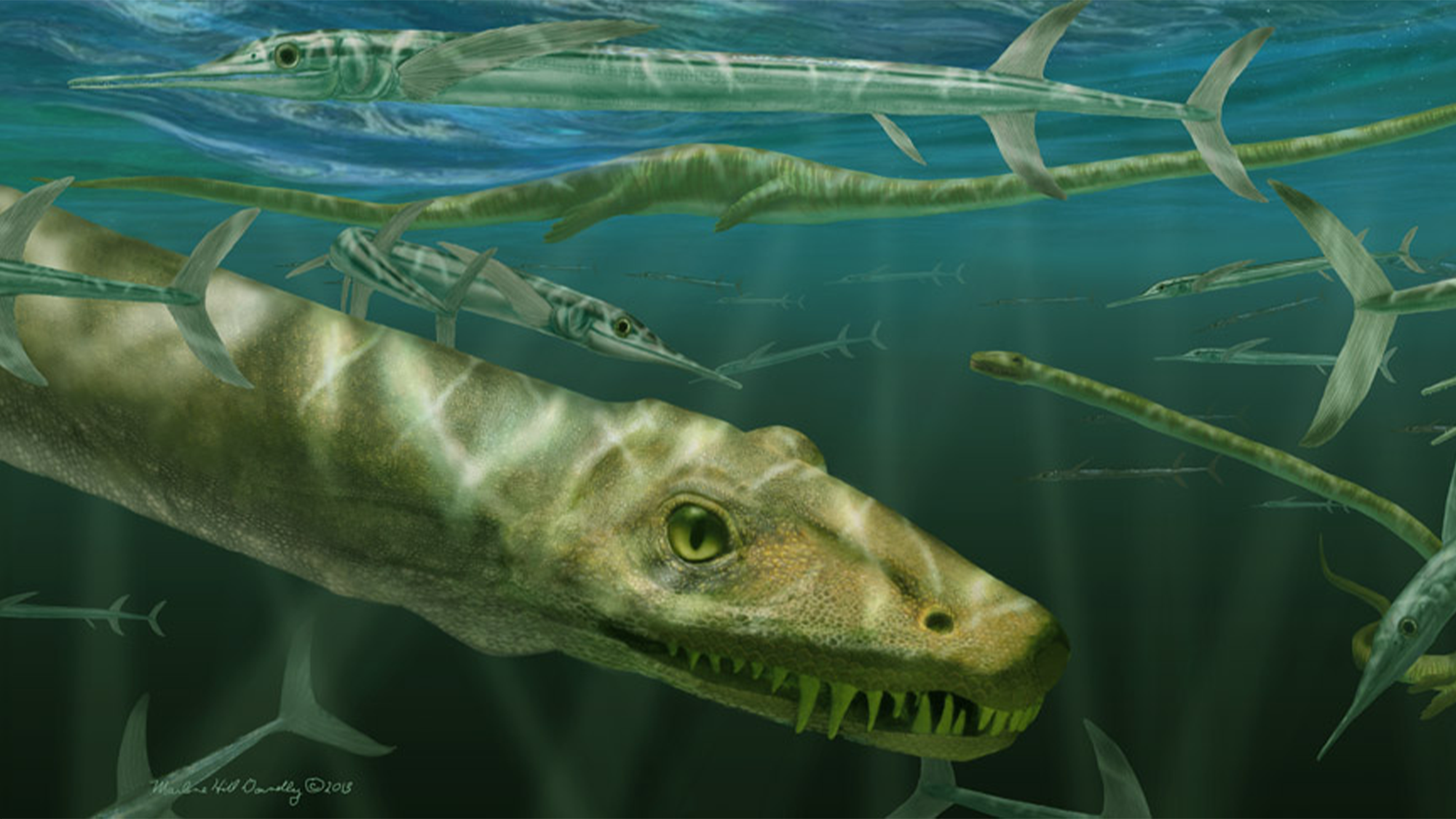

The Year of the Dragon is off to an exciting paleontological start. Only a few weeks following Lunar New Year celebrations around the world, an international team of scientists have fully described a 240-million-year old aquatic Chinese reptile for the first time. With its impressively long neck with 32 separate neck vertebrae, Dinocephalosaurus orientalis resembles the mythological fire breathers and water beasts of ancient lore. The species is described in a study published February 23 in the journal Earth and Environmental Science: Transactions of the Royal Society of Edinburgh.
[Related: Bite marks on Triassic fossils show signs of bloody dino decapitation.]

Dinocephalosaurus lived in what is now China about 240 million years ago during the Triassic Period. It likely used its signature long neck to hunt smaller aquatic creatures. According to the study, it was well adapted to life in the ocean, due to its flippered limbs and some well-preserved fish found in its abdomen. While it may look like the more famous long-necked plesiosaurs, Dinocephalosaurus was not closely related to them. Plesiosaurs evolved around 40 million years later, but likely inspired the myth of the Loch Ness Monster.
The fossils were first discovered in Guizhou Province in southern China in 2003. The remains were not initially complete, but further excavations allowed paleontologists to find the more complete remains. Over 10 years, researchers studied the fossil at the Institute of Vertebrate Palaeontology and Palaeoanthropology in Beijing. The institute is part of the Chinese Academy of Sciences.
“This has been an international effort. Working together with colleagues from the United States of America, the United Kingdom and Europe, we used newly discovered specimens housed at the Chinese Academy of Sciences to build on our existing knowledge of this animal,” study co-author and Chinese Academy of Sciences paleontologist Li Chun said in a statement. “Among all of the extraordinary finds we have made in the Triassic of Guizhou Province, Dinocephalosaurus probably stands out as the most remarkable.”
It also looks like another marine reptile from Europe and China in the Middle Triassic called Tanystropheus hydroides. Both reptiles were a similar size and shared some skull features. However, Dinocephalosaurus has more vertebrae in the neck and torso, making it look more like a snake.
“This discovery allows us to see this remarkable long-necked animal in full for the very first time,” study co-author and Keeper of Natural Sciences at National Museums Scotland Nick Fraser said in a statement. “It is yet one more example of the weird and wonderful world of the Triassic that continues to baffle paleontologists. We are certain that it will capture imaginations across the globe due to its striking appearance, reminiscent of the long and snake-like, mythical Chinese Dragon.”
[Related: This ancient reptile had a super long neck to sneak up on unsuspecting fish.]
China has been a fossil treasure trove over the past several years. Scientists in southern China discovered a fossilized egg containing the most complete dino embryo to date in late 2021. The embryo is estimated to be roughly 10.6 inches long. In September 2023, a new species Fujianvenator prodigiosus was uncovered in the Middle–Late Jurassic Yanliao Biota in northeast China that filled in some major gaps in dinosaur to bird evolution.
“As an early-career researcher, it has been an incredible experience to contribute to these significant findings,” Stephan Spiekman, a study-co author and paleontologist at Germany’s Stuttgart State Museum of Natural History, said in a statement. “We hope that our future research will help us understand more about the evolution of this group of animals, and particularly how the elongate neck functioned.”
